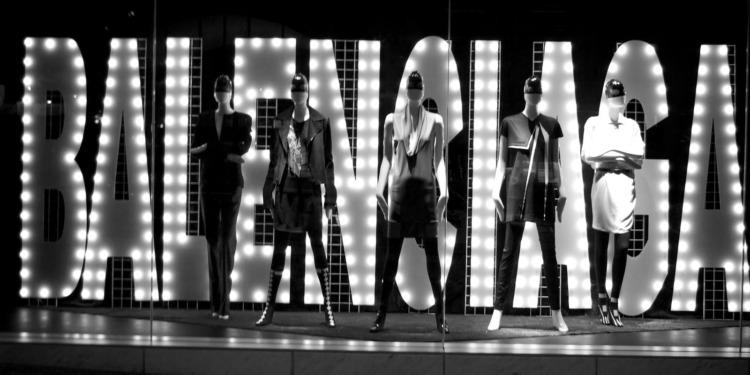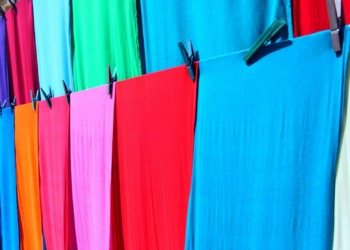Balenciaga is one of the biggest luxury fashion brands out there. The French-owned Spanish brand has long been known for its footwear, accessories, and handbags. The company has been called a revolution in women’s fashion, especially in reference to Spanish designer Cristóbal Balenciaga. But how does the house of today fare against our modern expectation of sustainability? Is Balenciaga sustainable?
Among the most polluting industries in the world, fashion is responsible for over 10% of carbon emissions. While fast fashion is responsible for the bulk of those effects, luxury brands have the chance to set different expectations. At the very least, they should be expected not to add to the problem.
How Sustainable Is Balenciaga?
Balenciaga claims to have been reducing its carbon footprint “for several years” now. It says it has been doing so not only in its design and production processes but also in its “offices, events, stores, and packaging.” How? By “introducing more responsible, recycled, and upcycled materials in lieu of others,” the brand gives an example.
The rest of emissions generated along the supply chain “are carefully calculated,” Balenciaga writes, adding that it “commit[s] to invest funds into carbon removal projects that protect and restore natural ecosystems.”
This is important because the emissions caused by suppliers, or Scope 3 emissions under the Greenhouse Gas Protocol, are often ignored while accounting for the majority of pollution produced.
So how much of its carbon footprint did Balenciaga reduce? What exactly does “several years” mean? How much are they investing in carbon removal projects? The company’s sustainability section doesn’t provide these answers.
One thing we have clear information on is Balenciaga’s commitment to reforestation. Its partnership with Reforestum is meant to raise awareness of and fund agroforestry projects. The collaboration is meant to “involve final customers in Balenciaga’s sustainability initiatives.”
Related Articles: How Sustainable Is Louis Vuitton? | Zara Black Friday 2023: The Hidden Toll of Fast Fashion | Paris Fashion Week: Can Glamour Meet Sustainability?
In practice, this means that part of the consumers’ money goes not to Balenciaga but to Reforestum. In exchange, the company gives each customer an “environmental asset” of their own.
Further, in 2021, Balenciaga and Alexander McQueen, another fashion house owned by Kering, abandoned their use of fur. Balenciaga eventually stopped using exotic animal skin and exotic animal hair altogether. In 2023, it even produced a plant-based leather coat.
A year later, in 2022, Balenciaga launched a resell service in collaboration with reseller Reflaunt. The program is meant to extend the life of pre-owned clothes and accessories, reducing the need for new products and avoiding unnecessary waste.
Looking at the company’s future, Balenciaga is aiming for 2025 to be the year it hits 100% metal-free tanned leather in all its products. This commitment, which the brand is scheduled to reach in time, is aligned with the standards of its parent company, Kering.
Sustainable Luxury at Kering
Kering is one of the largest luxury groups in fashion. Alongside Balenciaga, the French conglomerate is in charge of other names in luxury fashion like Gucci and Alexander McQueen. Because of this, we can learn a lot about Balenciaga’s sustainability efforts by looking at Kering’s environmental promises.
Since 2015, the company has managed to reduce Scope 1 and 2 emissions by 71% and Scope 3 by 52%. Not only are those some refreshingly clear numbers, but they’re pretty good, too.
In 2020, the group published its latest biodiversity strategy. The plan is composed of four phases:
- Avoid, referred to preventing negative environmental impact whenever possible. For example, the company would avoid using leather from endangered species.
- Reduce, when impact can’t be completely avoided (which is most of the time). This means using larger quantities of recycled material or opting for less damaging options like organic cotton.
- Regenerate, going one step forward, simply avoiding damage. Self-correcting the injuries of the past.
- Transform, which is about changing the shape of the fashion industry for the better. This is done by collaborating with initiatives like Fashion for Good and working to strengthen environmental policies.
Kering is a growing force in the change towards sustainability that has recently become so central to luxury fashion. To do so, the company partners with the likes of the Fashion for Good-Plug and Play Accelerator, which identifies and funds promising environmental fashion startups.
The company also collaborates with the London College of Fashion to create online courses in fashion sustainability. The objective here isn’t to raise awareness as much as to share skills that should be widespread. That’s why the courses are aimed at students and professionals, not the general public.
Editor’s Note: The opinions expressed here by the authors are their own, not those of Impakter.com — In the Featured Photo: Mannequins posing in front of giant letters spelling Balenciaga. Featured Photo Credit: Rollanb.










